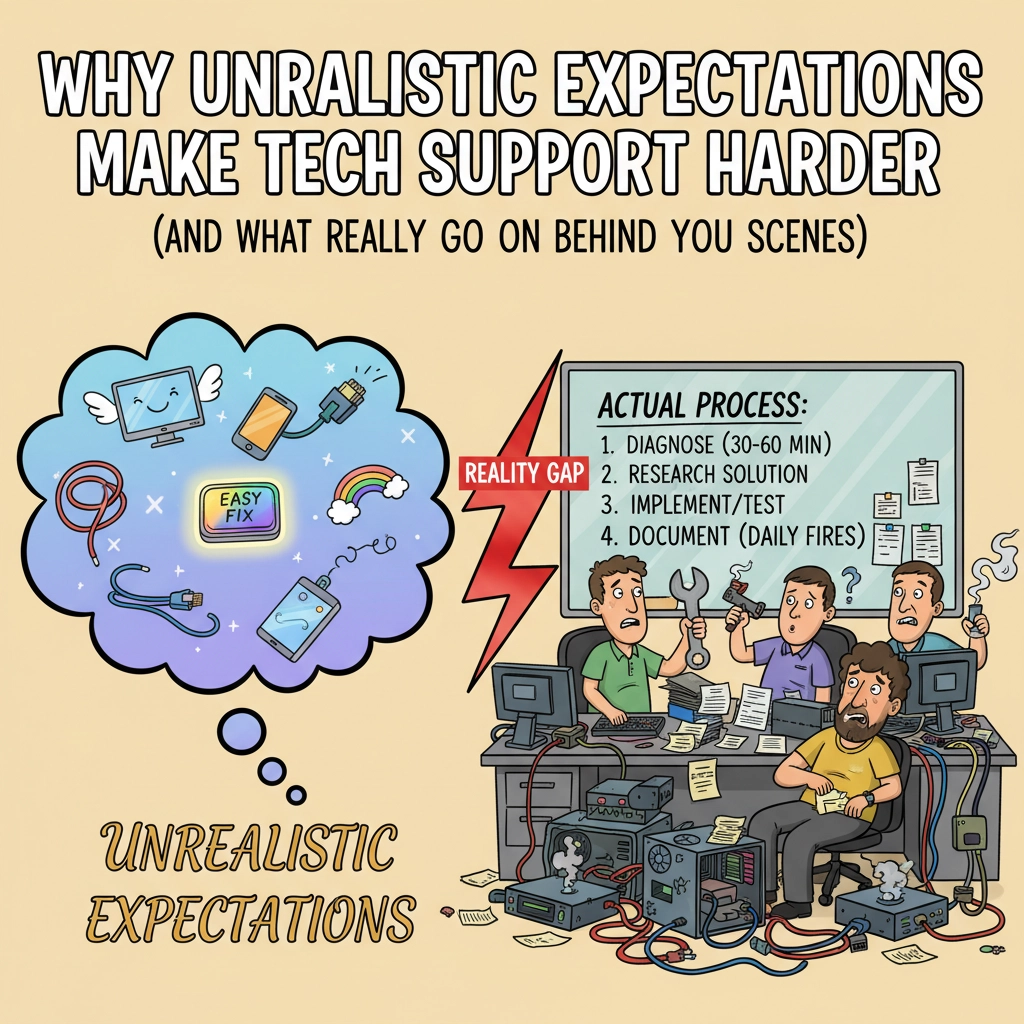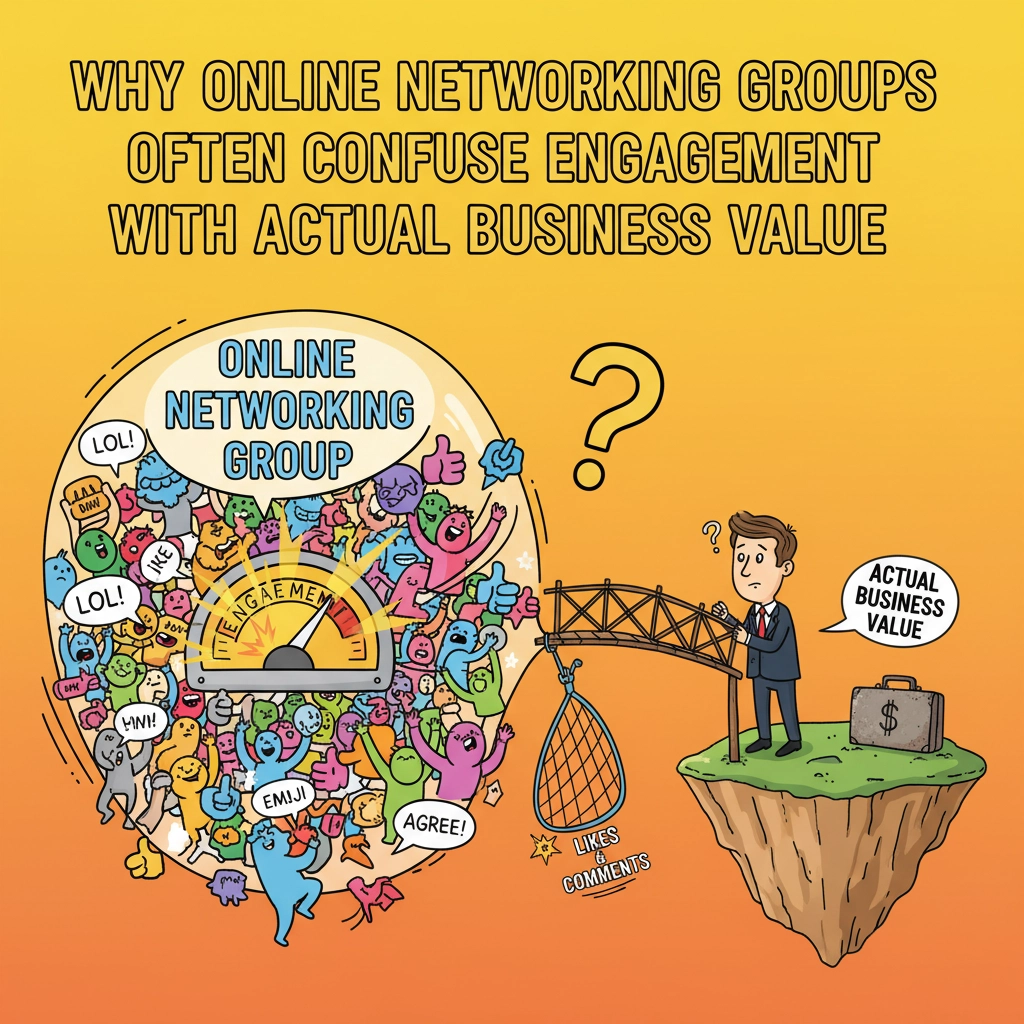The Hidden Costs of IT Inefficiency
In today’s business landscape, technology inefficiencies are silent profit killers. That outdated server humming in the corner? It’s not just consuming electricity—it’s draining your bottom line through maintenance costs, security vulnerabilities, and productivity losses that add up faster than most business owners realize.
Research shows that the average employee loses 22 minutes daily dealing with IT issues. That’s nearly two hours every week—or a staggering 91 hours annually—per employee. For a company with just 10 staff members, that’s effectively losing one full-time position to IT problems.
But here’s where things get interesting: most businesses don’t even recognize these inefficiencies until they’re eliminated. That’s where Managed Service Providers (MSPs) come in—not just as tech support, but as efficiency architects for your business.
The Inefficiency Traps Costing You Money
1. The Break-Fix Money Pit
The reactive “wait until it breaks” approach to IT management is like refusing to change your car’s oil until the engine seizes. Each emergency repair comes with premium pricing, unexpected downtime, and the intangible cost of frustrated employees and customers.
2. Hardware Hoarding
Many businesses maintain aging equipment well past its prime because it “still works.” What they don’t see is how that five-year-old workstation adds minutes to every task, multiplied across hundreds of operations daily. Meanwhile, the energy consumption and maintenance costs often exceed the price of modern, efficient replacements.
3. Software Sprawl and License Waste
The average small business uses more than 20 different software applications. Without proper management, companies frequently:
- Pay for unused licenses
- Maintain redundant applications with overlapping functions
- Miss volume discount opportunities
- Waste staff time with application switching
4. Security Vulnerability Costs
Security gaps aren’t just theoretical risks—they’re financial time bombs. The average cost of a data breach for small businesses ranges from $120,000 to $1.24 million, not including reputation damage and customer loss.

How MSPs Transform Inefficiency into Opportunity
Proactive vs. Reactive: The Fundamental Shift
When you partner with an MSP, you fundamentally change your relationship with technology. Instead of waiting for problems to occur, an MSP continuously monitors your systems, identifying and resolving issues before they impact operations.
This shift from reactive to proactive IT management typically reduces downtime by 85% and slashes emergency IT spending by 70% or more. But the benefits go far beyond these headline numbers.
The Efficiency Audit: Finding Hidden Value
A quality MSP begins by conducting a comprehensive assessment of your current IT infrastructure, processes, and needs. This often reveals surprising inefficiencies:
- Redundant Services: We recently discovered a client was paying for three separate cloud storage solutions across different departments when one enterprise solution would have saved 40% annually.
- Bandwidth Waste: Many businesses overpay for internet services or maintain outdated network configurations that create bottlenecks, slowing employee productivity.
- Automation Opportunities: Tasks that staff perform manually (like data entry, report generation, or system updates) can often be automated, freeing valuable human resources.
At Your Personal Ninja, we identify these inefficiencies through our diagnostic process, but the principle applies regardless of which MSP you choose.
The Financial Impact: How MSPs Cut Costs
1. Predictable Budget Planning
MSPs typically operate on fixed monthly fees rather than unpredictable hourly billing. This predictability allows for accurate budgeting and eliminates the financial surprises of the break-fix model.
2. Hardware Lifecycle Management
Strategic equipment rotation schedules ensure you replace aging technology before it impacts productivity or requires expensive emergency replacement. Many MSPs also provide access to vendor discounts and leasing options not available to individual businesses.
3. Vendor Consolidation and License Optimization
By analyzing your software environment, MSPs can:
- Eliminate redundant applications
- Negotiate better rates with vendors
- Ensure you’re only paying for licenses you actually use
- Recommend cost-effective alternatives to expensive legacy software
4. Reduced Security Incident Costs
Proactive security management dramatically reduces your risk profile. Through continuous monitoring, regular patching, and security awareness training, MSPs help prevent costly breaches before they occur.

The Time Dividend: How MSPs Free Up Resources
1. Automation of Routine Tasks
Modern MSPs leverage automation to handle repetitive tasks like:
- Software updates and patch management
- System backups and verification
- Security scanning and monitoring
- Report generation and compliance documentation
This automation not only reduces error rates but also frees IT staff (or the employees handling IT duties) to focus on more strategic initiatives.
2. Reduced Resolution Time
When issues do arise, MSPs typically resolve them faster than internal teams for several reasons:
- 24/7 monitoring means problems are often caught early
- Technicians have broad experience across multiple environments
- Access to specialized tools and diagnostic systems
- Established procedures for common issues
3. Elimination of Technology Distractions
Perhaps the most significant yet hardest-to-quantify benefit is allowing your team to focus on their actual jobs rather than troubleshooting technology problems.
When employees can rely on stable, optimized systems and prompt support when needed, they spend more time on revenue-generating activities and less time fighting with technology. This focus shift alone can transform business performance.
Real-World Efficiency Gains
Let’s look at some typical results businesses experience after partnering with an MSP:
- A 12-person law firm reduced IT spending by 28% while increasing uptime to 99.98%, simply by moving from break-fix support to a managed services model that included hardware lifecycle management and cloud optimization.
- A medical practice with three locations recovered 15 hours of staff productivity weekly after an MSP automated their backup processes and simplified their patient record access systems.
- A retail business discovered they were paying for 32 unused software licenses across various applications—an immediate $9,400 annual savings once identified by their MSP’s software audit.
While results vary by industry and organization, businesses consistently report both hard cost savings and productivity improvements after moving to a managed services model.

Finding the Right MSP Partner
The right MSP doesn’t just fix computers—they become a strategic partner in optimizing your business operations. When evaluating potential providers, look beyond hourly rates to consider:
- Proactive Philosophy: Do they focus on preventing problems or just fixing them?
- Business Alignment: Do they understand your industry and business goals?
- Technology Roadmapping: Do they help plan future technology investments to support growth?
- Communication Style: Do they explain technical concepts in business terms?
- Continuous Improvement: Do they regularly review and optimize your systems?
A quality MSP should be able to demonstrate how their services directly contribute to your bottom line through efficiency improvements, risk reduction, and strategic technology alignment.
Taking the Next Step Toward Efficiency
If you’re wondering how much inefficiency might be hiding in your current IT operations, consider conducting an efficiency audit. Many MSPs (including Your Personal Ninja) offer initial assessments to identify potential savings and efficiency gains specific to your business.
These evaluations typically examine:
- Current IT spending across hardware, software, and support
- Staff productivity impacts from existing systems
- Security vulnerabilities and compliance gaps
- Automation opportunities
- Strategic alignment of technology with business goals
The insights from this process often reveal immediate savings opportunities alongside longer-term strategic improvements.
Conclusion: Efficiency as a Competitive Advantage
In today’s competitive landscape, operational efficiency isn’t just about cutting costs—it’s about creating capacity for growth and innovation. By eliminating the inefficiencies that drain resources from your business, an MSP partnership lets you redirect those resources toward your core business objectives.
The most successful businesses view their MSP not as a cost center but as an efficiency engine that powers improved performance across the organization. When technology just works—reliably, securely, and optimally—everything else in your business works better too.
Ready to discover the inefficiencies hiding in your technology environment? Visit our efficiency resources or explore our service offerings to learn how the right MSP partnership can transform your business operations.
Remember: in business, efficiency isn’t just about saving money—it’s about creating the capacity to grow.
Share this:
- Click to share on Facebook (Opens in new window) Facebook
- Click to share on Tumblr (Opens in new window) Tumblr
- Click to share on X (Opens in new window) X
- Click to share on Pocket (Opens in new window) Pocket
- Click to share on Pinterest (Opens in new window) Pinterest
- Click to share on LinkedIn (Opens in new window) LinkedIn




